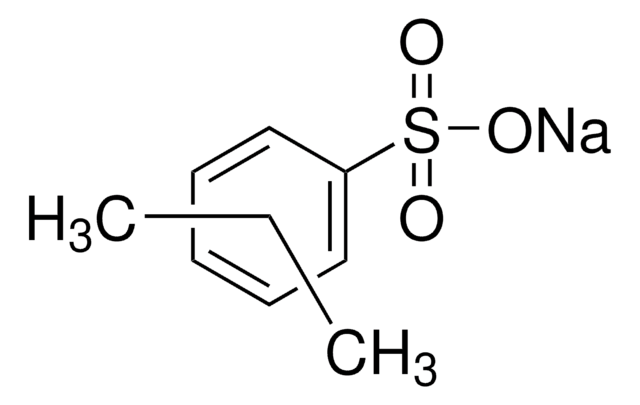This product is sold by weight. Each package size represents 1 sheet of Platinum foil at the specified weight of the package size. The sheet dimensions are as follows:
350 mg = 25 × 25 mm
1.4 g = 50 × 50 mm
267244
Platinum
foil, thickness 0.025 mm, 99.9% trace metals basis
Sinónimos:
Platinum element, Platinum gray
Seleccione un Tamaño
299,00 €
Seleccione un Tamaño
About This Item
299,00 €
Productos recomendados
Nivel de calidad
Ensayo
99.9% trace metals basis
Formulario
foil
resistividad
10.6 μΩ-cm, 20°C
grosor
0.025 mm
bp
3827 °C (lit.)
mp
1772 °C (lit.)
densidad
21.45 g/cm3 (lit.)
cadena SMILES
[Pt]
InChI
1S/Pt
Clave InChI
BASFCYQUMIYNBI-UHFFFAOYSA-N
Categorías relacionadas
Descripción general
Aplicación
- growth of high crystalline boron nitride (BN) material for UV optoelectronic devices.[1]
- fabrication of electrochemically stable microelectrode arrays[2]
- a counter electrode for the fabrication of supercapacitors[3]
- an enzyme electrode probe for potential usage in biosensors[4]
Cantidad
Código de clase de almacenamiento
13 - Non Combustible Solids
Clase de riesgo para el agua (WGK)
nwg
Punto de inflamabilidad (°F)
Not applicable
Punto de inflamabilidad (°C)
Not applicable
Elija entre una de las versiones más recientes:
¿Ya tiene este producto?
Encuentre la documentación para los productos que ha comprado recientemente en la Biblioteca de documentos.
Los clientes también vieron
-
How many sheets are in a “pack”?
1 respuesta-
¿Le ha resultado útil?
-
-
Hi, I would like to know what is the dimension of the foil for the 267244 product. the size is only written in grams and I would need the wight and the lenght of the foil Thank you
1 respuesta-
As listed in the Description section of the product page, the 350 mg pack size is 25 × 25 mm and the 1.4 g pack size is 50 × 50 mm. The thickness of each is 0.025 mm.
¿Le ha resultado útil?
-
Filtros activos
Nuestro equipo de científicos tiene experiencia en todas las áreas de investigación: Ciencias de la vida, Ciencia de los materiales, Síntesis química, Cromatografía, Analítica y muchas otras.
Póngase en contacto con el Servicio técnico




